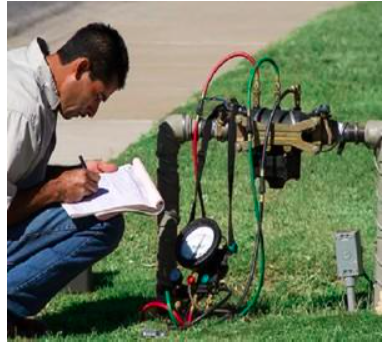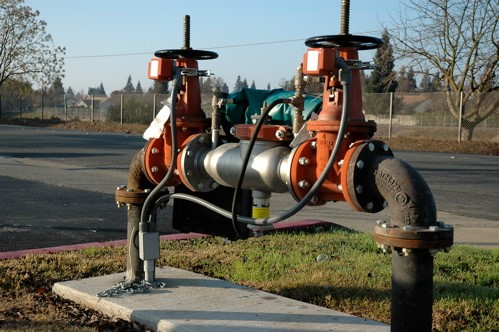Nearly everybody has their own perception with regards to Commercial Backflow Testing.

Yes, you need to backflow examination your residence's supply of water to ensure that the water is devoid of contaminants as well as harmful degrees of chemicals. Due to the tools needed and also area for error, you ought to not try to do heartburn testing by yourself. We advise that you call an expert plumber every couple of years to examine your water.
Backflow Can Effect Both You and also Your City
Several cities develop heartburn standards since dangerous backflow can affect the general public water system in addition to a single structure. Fortunately, modern-day cities have backflow tools in place that safeguard the water system that comes from most residences and also business properties. The actual risk originates from watering systems, which can hurt the supply of water with poisonous fertilizers, manure, as well as other chemicals.
What Triggers Heartburn?
A regular reason for heartburn is a loss of water pressure that causes the water to siphon back into the water. An example is cleaning out a paint bucket making use of a tube. You load the paint pail up with water, leaving the hose in the container. After a long time, there is a loss in water pressure and the pipe starts to draw the water back into the supply of water. As you can visualize, there are currently chemicals from the paint that are going into the water system, possibly posturing a danger. Lots of individuals are not also aware of backflow screening, but there are several reasons why it's so essential.
Backflow Testing is Needed by Legislation in Particular Cities
Relying on where you live, you may really be needed by law to backflow test your law. Iowa City keeps a document of all buildings offered by the city's water supply. The city calls for that specific "high-hazard" facilities undertake backflow screening. Sometimes, residential properties such as homes and apartment are influenced.
You Can Stop Backflow
The primary purpose of a backflow gadget is to prevent water from flowing in reverse right into your water supply. Plumbers mount the gadget on the pipelines in your house to guarantee that the water just flows in the right direction.
What is Heartburn?
Simply put, heartburn is when water moves upwards-- the contrary instructions in the plumbing system. This is also referred to as "backpressure." When the water relocates this instructions, it can combine with unsafe toxins and position a threat.
Call a Plumber to Check for Heartburn Prior To It is Too Late
A plumbing business can quickly examine your house's water to determine if there are any kind of hazardous chemical degrees. As well as if you do uncover that your water has high degrees of toxins, a plumber can quickly install a backflow avoidance gadget.
Yes, you require to backflow test your house's water supply to ensure that the water is cost-free of toxins as well as harmful levels of chemicals. Many cities establish backflow standards due to the fact that harmful heartburn can influence the public water supply in enhancement to a single building. A normal reason of heartburn is a loss of water stress that creates the water to siphon back into the water supply. After some time, there is a loss in water pressure as well as the tube starts to suck the water back right into the water supply. The major purpose of a backflow device is to prevent water from moving backwards into your water supply.
Backflow Testing: What Is It, and Why Is It Necessary?
What Is Backflow?
Backflow is exactly what you might imagine this somewhat gross-sounding word to mean. It is contaminated water that has reversed flow, and as a result, enters into the clean water lines of homes and businesses. Backflow is typically caused by a significant change in water pressure. This can be due to a water main break, frozen pipes or an unexpectedly high demand on the water system. It can occur at any cross-connection between clean and dirty water in residential, commercial or industrial water lines. And the worst part – backflow can contain hazardous materials like human waste, pesticides or chemicals. Needless to say, it poses very, very serious health concerns, not to mention the potential for a heap-load of expensive stress!
Backflow Prevention and Testing
In order to safeguard against backflow in standing structures, a backflow prevention device should be installed by a trusted team of professionals. Once installed, if there should ever be an unexpected or dramatic change in water pressure, the device will prevent backflow from entering into the clean water supply system. But, again, it’s important that this device is properly installed by a professional so that they can test it and ensure that the clean water line remains contaminant free. This really is key.
While personal standards and responsibilities should maintain certain routine testing requirements, there are already municipal codes in place that require annual testing of these backflow prevention devices. This ensures that they are functioning properly and that no hazardous contaminants are spilling out into the clean water supply. If, however, testing of any device is not completed on time, you should know that a property or business’ water supply might be interrupted, and the property owner might even face fines. So, to avoid this from happening to you, we recommend scheduling a backflow test well in advance.
Fortunately, here at Tritan, we can help schedule and carry out backflow testing for your property. We provide a variety of backflow-related services, including prevention device installation and testing. Call us today and make sure that this stressful problem doesn’t happen to you and your property or business.
https://www.tritan-plumbing.com/blog/2018/february/backflow-testing-what-is-it-and-why-is-it-necess/

As a reader on Backflow Assembly Testing, I was thinking sharing that piece of writing was a good thing. You should take the opportunity to distribute this blog posting if you appreciated it. Thank you so much for going through it.
Schedule Appointment Now
Comments on “Is Backflow Testing Critical for My Water?”